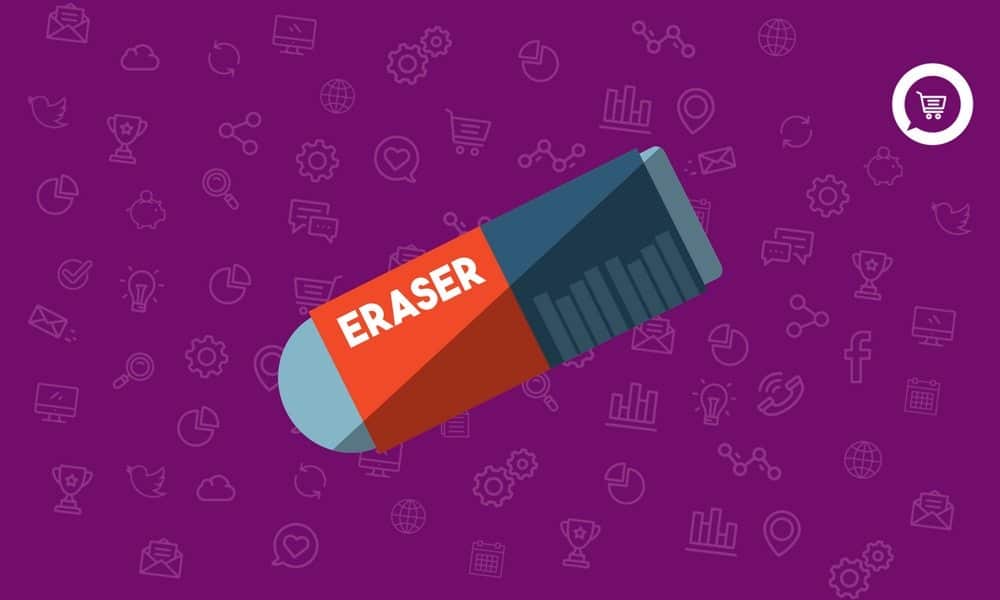There are some mistakes you should avoid doing in e-commerce. Comparing pricing strategies applied in brick & mortar and e-commerce store is much more like comparing apples and oranges. The pricing tactics work for a physical store won’t give the same outcomes for an online store. In fact, the pricing strategies in two online retailers competing in different industries (e.g. electronics vs. fashion) should be analyzed separately as they have different dynamics and variables.
So, you need to tweak your strategy and adjust your prices according to characteristics of the industry, behavior of customer, costs and your objectives.
4 Mistakes You Should Avoid Doing in E-Commerce
However, executing it is not as simple as it is thought. E-commerce retailers repeat same mistakes again and again because of imperfect information and misapplied strategies. Here, we’ll state the most common pricing mistakes in e-commerce and give some advice to make sure that your company doesn’t fall into the same mistake loop.
1. Not Being Able to Calculate the Costs
Very firstly, even you aim to apply market oriented or competition oriented pricing strategy, your costs should form the base and be the initial point of all of the various strategies. Knowing them extremely well is so crucial that if your prices fail to be above of your costs, you won’t ensure the health of your business.
Does it sound simple? Right?
But, assumptions don’t reflect the reality. In fact, they often fail to put accurate calculations in the equation. The reason that lies behind in this fact is; not being able to define the real costs. Most of e-commerce retailers suppose that the actual cost is mostly about the deals made with suppliers and ignore the rest of the overhead costs. In e-commerce, unit product cost contains many other overhead costs. Companies often approach with primitive level by basically deciding their prices by taking into account the amount of money they pay to their suppliers and ignore to add the employee costs, the marketing costs or all other general operating costs.
To eliminate this problem, e-commerce companies should build a very strict cost calculation system by detecting all invisible costs and add all of them to the overall cost. The rest is just setting the prices above the costs.
2. Isolating From Competition and Having Constant Prices
E-commerce is huge and you are just one drop in ocean. There are more than 12 millions of online retailers in industry. Besides, as all of the players in that industry (12 millions of stores and online shoppers) have a clear vision on every offering of e-commerce retailers, you are also benchmarked and compared with your competitors.
Let’s draw a quick round-up of e-commerce industry by showing some significant findings;
- 90% of buyers research online to find the prices and deals.
- In just 5 minutes you can see more than 50 deals from different websites, thanks to price comparison engines.
- 20% of e-commerce website traffic comes from price comparison sites.
- 60% of buyers state that price is the most important factor in purchasing decision.
As it can be seen from the numbers and percentages, online world is highly competitive and unforgiving. Isolating your online store from the competition and just focusing on internal issues would not be acceptable in such price wars. But the destiny is in your hands.
You should be aware of everything happening around the market and you need to have a high-level of understanding about competitors’ pricing moves, strategies. After getting these actionable insights, you need to develop an acting reflex against all these competitor moves in order to be ahead of them.
However, most of the e-commerce companies keep applying constant prices and don’t change their pre-decided annual, quarterly or monthly pricing plans. In an extremely fluctuable and moving industry, adopting dynamic prices will be a wise business approach.
If not, online shoppers will leave your online shops for one of your dynamic competitors to find better offerings. Prices should be evaluated, monitored and tested strictly like you do for other marketing efforts such as Facebook ads, Google Adwords. You don’t want to spend even one penny for one of your campaign which does not generate great results and attract potential customers for your online store. If you fail to do with your prices, maybe you won’t spend money but more dangerous one, you will constantly lose customers.
The best practice of applying dynamic prices is to have frequent intelligence from competitors and market. By doing that you can know the actual position in market and respond every move of your competitors.
At this point you should have a clear vision on two acts: how to monitor the prices of the competition and which brands can really compete with yours. This argument brings out a new question and new possibility of mistake which address not knowing what to analyze and where to look in terms of competition and competitors.
In e-commerce industry, you can use competitor price tracking software which will give you a great ability of monitoring competitors. With the gathered data through price tracking tools, you can respond every single move of your competitor and update the prices frequently. The more important thing, you’ll have a perfect understanding about the overall market.
3. Focusing on Being Lowest in Market
From the conventional perspective, it is believed that lowest prices will lead e-commerce retailers higher sales. But, always setting lowest prices will bring out new problematic outcomes.
- As mentioned above, if you make your prices below your costs, your financial health and profitability will be in huge danger. So, you should ask yourself what is the final point of cutting prices? It is impossible to cut your prices under your competitors every time. At one point, you will start losing money even you have a high number of sales.
- Pricing is one of your marketing tools for shaping your customer’s perception of your product. Setting too low can make it a cheap product in terms of quality in the minds of conscious consumers. They can easily imply that your low-priced product is weaker than its more premium-priced competition.
What I would like to advise that instead of always lowering your prices, try to seek some opportunities of increasing the prices while holding best-deal position in market. In some cases, there may be a 50$ difference with your closest competitor. So, if you decide to increase the prices by 40$, you will still remain the competitive advantage among the market and boost your profits.
To see the actual price position in market and detect these opportunities, competitive price intelligence is an effective way to use.
4. Failure to Segment the Target Group
If you are in e-commerce circle and selling multiple products, you definitely have high variety of customer groups. But every group has different behaviors, needs, perception. If you treat all of them as one homogenous group, unfortunately you are doomed to lose many of them. Today, they need personalized experience and offerings from you. Take this insight into account when applying prices and try to design packages and special prices upon their perceptions and previous habit that you’ve detected.
An e-commerce company of any size can get immense benefits by having a fine-tuned competitor monitoring system and knowing the every single group of audience. Anything we missed? Tell us below or Tweet us!




